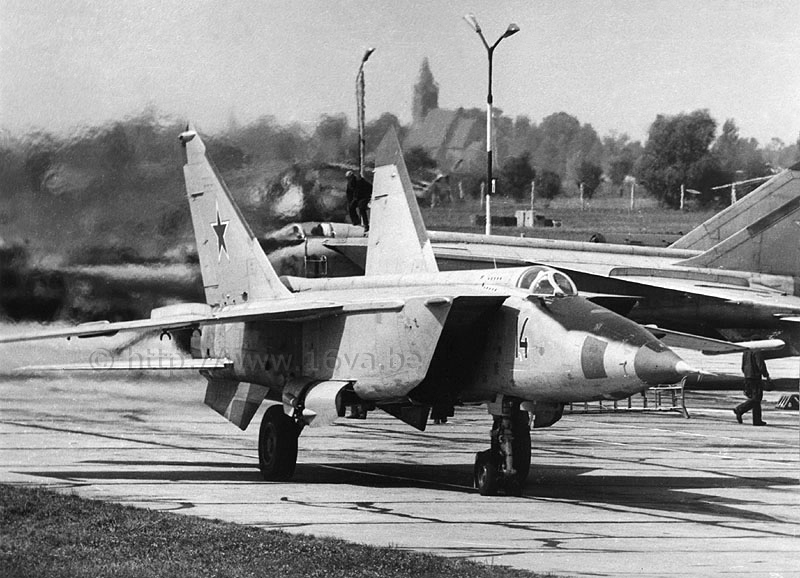

Les MiG-25RB. du 164 "Kertchenskiy" OGvRAP basés à Brzeg en Pologne (ici, un MiG-25RBK) avaient des profils de mission similaires à ceux des MiG-25 d'attaque et de reconnaissance de la 16.VA. La grande différence entre les versions RB du MiG-25 et la version initiale R, était la capacité des premiers à emporter jusqu'à 5 tonnes de bombes FAB-500M-62. L'utilisation des MiG-25RB en tant que bombardiers était hautement prioritaire, chaque pilote devant, suivant son niveau d'entraînement, larguer un minimum de 54 bombes. Les bombardements s'effectuaient à Mach 2 depuis une altitude comprise entre 17 et 22km. La marge d'erreur tolérée était de 400 à 500m. Les capacités nucléaires de ces MiG-25 ne sont connues que depuis peu, alors que la frappe nucléaire tactique faisait partie de leurs missions depuis au moins le milieu des années soixante-dix.
MiG-25RBs of the 164 "Kerchenskiy" OGvRAP from Brzeg in Poland (here, a MiG-25RBK) performed the same tasks as the strike and reconnaissance MiG-25s of the 16.VA. The decisive difference between the RB sub-types and the previous R version was the ability of the former to deploy FAB-500M-62 bombs, with a maximum payload limited to 5 tonnes. The type’s use as a bomber had high priority, with each pilot, according to his training level, being expected to drop at least 54 bombs. This took place from an altitude of between 3.25 and slightly over 4 miles, the ‘margin of error’ tolerance being about 250-300 yards flying at or around Mach 2. We’ve only recently learned of the MiG-25’s nuclear capabilities, even though this was part of its mission at least since the mid-1970s.
This information was originally published in the article entitled "Last of the Foxbats - The story of the Russian AF’s recce MiG-25s" by Stefan Büttner, in the May 2009 issue of Aircraft Illustrated (Ian Allan Publishing)
